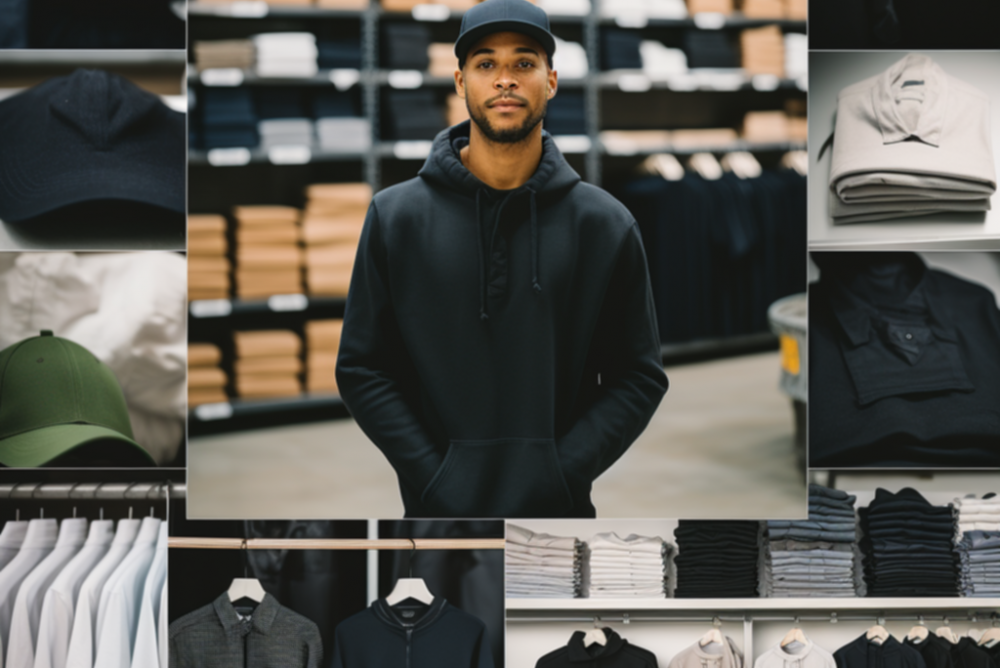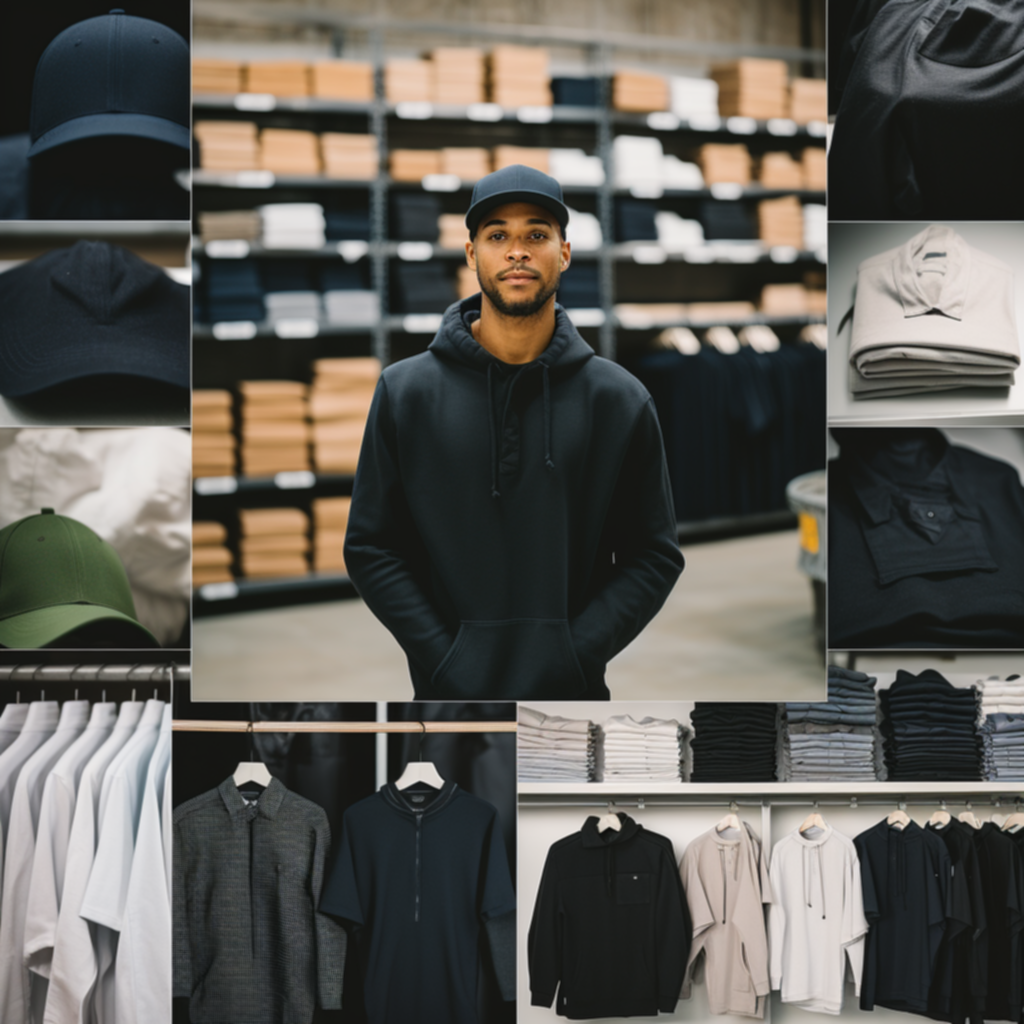Mastering Wholesale Apparel: A Target Market Guide


When it comes to the fashion industry, the adage 'one size fits all' certainly doesn't apply. For entrepreneurs looking to venture into the wholesale apparel business, finding the perfect fit for a specific target market becomes the linchpin for success. It's not just about stocking up on clothes and waiting for customers to come knocking; it's a strategic play that calls for an in-depth understanding of the market, its demands, and how best to meet them.
This article serves as a comprehensive guide for those aspiring to excel in the wholesale apparel sector. It delves into the critical elements that contribute to a successful venture—from understanding your target market to choosing the right type of wholesale apparel, focusing on quality, staying updated on seasonal trends, and building a reliable network with suppliers.
A well-rounded approach ensures a better fit between what you offer and what the consumer desires, ultimately affecting your bottom line. So, whether you are a seasoned player in the business or an enthusiastic start-up, the insights presented here will provide a fresh perspective on how to find that perfect fit between your wholesale apparel and your target market.
Understanding Your Target Market
2.1 Market Demographics
Before plunging into the world of wholesale apparel, a clear understanding of your target market is imperative. Demographics, such as age, gender, income level, and geographic location, are essential starting points. For instance, a wholesale business targeting millennials might opt for trendier, more affordable options, while a target market consisting of professionals may value quality and classic styles.
Actionable Insight: Utilize market research surveys or available data to create a comprehensive demographic profile of your potential customers.
2.2 Market Behavior
Equally vital is understanding how your target market behaves—when they shop, how they shop, and where they shop. While some may prefer e-commerce platforms, others might be inclined towards traditional brick-and-mortar stores.
Actionable Insight: Analytics tools can help track consumer behavior, revealing patterns that can be invaluable in shaping your business strategy.
2.3 Market Needs
What are the particular needs and pain points of your target market? Perhaps they're looking for eco-friendly apparel options or sizes that aren't typically available. Addressing these needs not only fills a gap in the market but also establishes your brand as attentive and responsive.
Actionable Insight: Customer feedback and reviews can offer unfiltered insights into what your target market is actually seeking.
By focusing on demographics, behavior, and specific needs, you lay a sturdy foundation upon which to build your wholesale apparel business. These components don't merely help you select which clothes to stock; they also guide your marketing strategies, your partnerships with suppliers, and even your pricing models.

Choosing the Right Type of Wholesale Apparel
3.1 Casual Wear
Casual wear often forms the backbone of any apparel line due to its broad appeal. Items like t-shirts, jeans, and casual dresses cater to various age groups and settings. The key here is to offer a blend of classic and trendy pieces that resonate with your target market's lifestyle.
Actionable Insight: Monitor social media and fashion blogs to gauge trending casual wear items within your target demographic.
3.2 Formal Wear
it comes to formal wear, the stakes are higher—both in terms of quality and price point. If your target market includes working professionals or people attending frequent formal events, quality suits, dresses, and accessories are a must.
Actionable Insight: Keep tabs on industry events, such as fashion weeks, where formal wear trends are often set. Make sure your offerings reflect these trends.
3.3 Sportswear
The athleisure trend has catapulted sportswear into everyday fashion. If your target market is health-conscious or athletically inclined, a range of high-quality sportswear items could be a profitable addition to your wholesale catalog.
Actionable Insight: Opt for suppliers who provide durable, breathable materials that meet the functional needs of an athletic lifestyle.
3.4 Specialty Wear
Specialty wear includes niches like maternity, plus-size, or culturally specific attire. This category can be particularly lucrative if your market research identifies a gap in these offerings for your target audience.
Actionable Insight: Feedback and customer surveys can be especially helpful when dealing with specialty wear to ensure that the specific needs of these niche markets are met.
In essence, the type of wholesale apparel you choose should mirror the lifestyles, needs, and preferences of your target market. Striking a balance between variety and specialization will not only make your inventory more appealing but also contribute to a more focused and effective business strategy.

Quality vs. Quantity
4.1 Material Quality
The texture, durability, and overall feel of the apparel have a direct impact on customer satisfaction. While synthetic fibers like polyester are cost-effective, natural fibers like cotton or wool often signify higher quality. Depending on your target market, this distinction could be pivotal.
Actionable Insight: Always ask for fabric samples from suppliers and consider conducting focus group tests to gauge your target market's preferences for material quality.
4.2 Manufacturing Processes
The method of production can also influence the quality of apparel. Mass-produced items may lack the intricate detailing that might be present in boutique or hand-crafted pieces. Some consumers value this distinction, particularly those looking for sustainable or ethically-made products.
Actionable Insight: Visiting manufacturing facilities, whether virtually or in-person, can offer valuable insights into the production methods and allow you to make informed decisions.
4.3 Brand Recognition
Working with reputable brands can lend an air of quality and trustworthiness to your wholesale offerings. Even if your business is just starting, aligning with well-known brands can help establish credibility.
Actionable Insight: Consider a balanced portfolio of well-known brands and rising names in the fashion industry to cater to varied consumer preferences.
Quality shouldn't be sacrificed for the sake of quantity. The two aren't mutually exclusive, but striking the right balance is essential. Too much focus on stocking up in large volumes may dilute the quality of your offerings, while a limited, high-quality selection might not meet the demands of a larger target market.
So, the trick lies in balancing quality and quantity in a way that meets the specific needs and preferences of your target market, thereby ensuring not just short-term sales but long-term customer loyalty.
The Importance of Seasonal Trends
5.1 Spring/Summer Collection
As temperatures rise, consumer interest in lightweight, breathable fabrics like cotton and linen also increases. Additionally, bright colors and floral patterns typically gain traction during these seasons. Staying ahead of these trends can help you stock your inventory more effectively.
Actionable Insight: Keep an eye on major fashion events and publications that release spring/summer trend reports. Make your purchasing decisions well in advance to capitalize on these trends.
5.2 Fall/Winter Collection
During the colder months, consumer preferences shift toward heavier materials like wool and flannel. Neutral and darker shades often dominate color choices. Outerwear, such as jackets and coats, become crucial additions to your inventory.
Actionable Insight: In addition to seasonal fashion shows, pay attention to early trend forecasts from industry experts. Timing your inventory turnover to align with these trends can give you a competitive edge.
Seasonal trends are not just a matter of changing colors or fabrics; they're about staying relevant. Understanding the cyclical nature of fashion can position you to better anticipate the needs of your target market. Failure to adapt can result in an out-of-date inventory that neither appeals to your target market nor generates sales.
If you can align your wholesale apparel offerings with the season's trends and your target market's preferences, you're likely to see a more robust bottom line. It's about being in the right place, at the right time, with the right products.
Establishing Relationships with Suppliers
6.1 Research
Your suppliers are your business partners, and choosing them wisely is crucial for your venture's success. Research various suppliers in terms of their reputation, reliability, and product quality. Look for testimonials or reviews, and consider reaching out to current or past clients for feedback.
Actionable Insight: Utilize platforms like Alibaba or industry-specific directories to begin your research. Aim to create a shortlist of potential suppliers and scrutinize each one carefully.
6.2 Negotiation
Once you've zeroed in on potential suppliers, the next step is negotiation. Discuss terms, prices, minimum order quantities, and delivery schedules. A successful negotiation is not about driving the hardest bargain but finding a mutually beneficial agreement.
Actionable Insight: Prepare for negotiations by understanding market rates for the apparel you're interested in. This will provide a solid base for discussions.
6.3 Long-Term Partnership
Building a long-term relationship with suppliers goes beyond a single transaction. It involves regular communication, reliability from both parties, and sometimes, the ability to adapt to changes or challenges.
Actionable Insight: Keep open lines of communication with your suppliers. Regular check-ins can lead to better terms and early information on new products or trends.
By establishing strong relationships with suppliers, you gain an edge in the competitive landscape of wholesale apparel. These relationships can lead to exclusive deals, better prices, and early access to new items—all of which can significantly benefit your business and better serve your target market.

Marketing Your Wholesale Apparel
7.1 Online Marketing
In today's digital age, a strong online presence is almost mandatory. Utilizing social media platforms like Instagram and Facebook can offer direct access to your target market. Running targeted ads based on the demographic and behavioral data you've gathered can yield high returns.
Actionable Insight: Develop a content calendar for social media to consistently engage your audience. Use analytics to measure the effectiveness of your campaigns and adjust accordingly.
7.2 Offline Marketing
While the digital world offers numerous advantages, traditional marketing channels shouldn't be ignored. Participating in trade shows, running print advertisements, or partnering with local businesses can provide an invaluable touchpoint with potential customers.
Actionable Insight: Always carry business cards or product catalogs during trade shows and networking events. Personal interactions can lead to unexpected opportunities.
Marketing is the vehicle that drives your products to your target market. Whether it's online or offline, each strategy you employ should be tailored to the particular needs and behaviors of the people you aim to serve. By marrying your marketing strategies with your understanding of the target market, you create a potent formula for business growth.
Real-World Case Studies
8.1 Case Study 1: Zara - Quick Inventory Turnover
The fashion retail giant Zara has mastered the art of quick inventory turnover. By listening to customer feedback and closely monitoring sales, Zara adapts its inventory in near real-time. This agility allows it to meet the current demands of its target market, making it one of the most responsive brands in the industry.
Actionable Insight: Regularly analyze your sales data and customer feedback to adapt your inventory and meet the real-time demands of your target market.
8.2 Case Study 2: Lululemon - Focusing on Community
Lululemon, a brand initially targeting yoga enthusiasts, understood the importance of community. They incorporated customer feedback directly into their product development and created an experience around their brand, extending beyond just apparel.
Actionable Insight: Consider building a community around your brand or products. Engage with your target market through forums, social media, or even local events.
8.3 Case Study 3: Everlane - Transparency in Sourcing
Everlane sets itself apart with its radical transparency. Customers can see exactly how much it costs to produce each item and where it was made, appealing to an increasingly conscious consumer base.
Actionable Insight: Consider making your sourcing and manufacturing processes transparent to build trust with your customer base.
8.4 Case Study 4: ASOS - Niche Market Success
ASOS identified a gap in the market for trendy, affordable apparel designed specifically for young adults. Their online-only approach and focus on this niche have been pivotal in their success.
Actionable Insight: If your market research identifies an underserved niche, consider tailoring your product offerings and marketing strategies to exclusively cater to that segment.
Analyzing successful real-world examples can provide invaluable insights into managing your own wholesale apparel business. These case studies serve as concrete illustrations of how understanding your target market, selecting appropriate inventory, and marketing effectively can significantly impact your success.





-500x500.jpg)
-500x500.jpg)
-500x500.jpg)
-500x500.jpg)
-500x500.jpg)